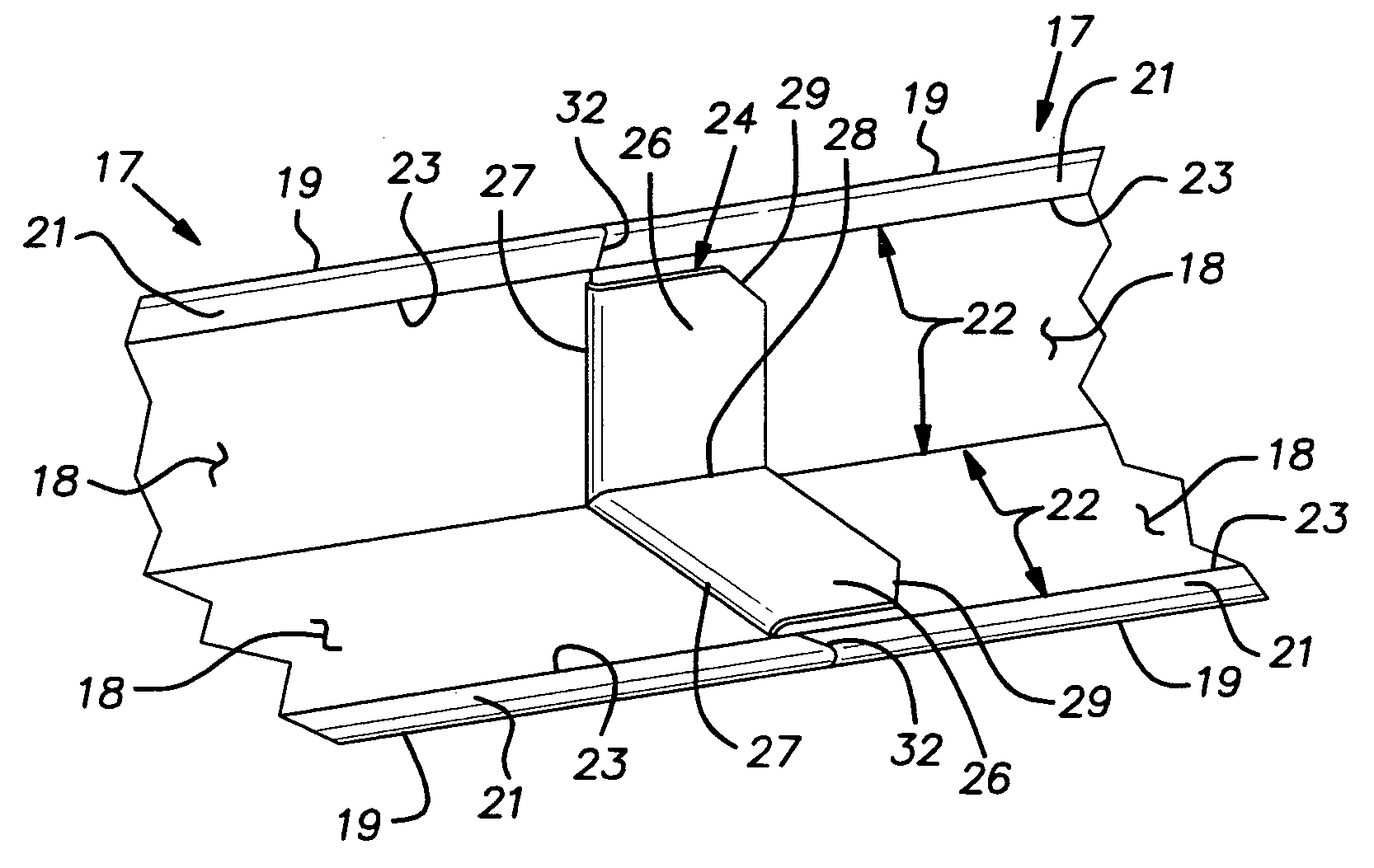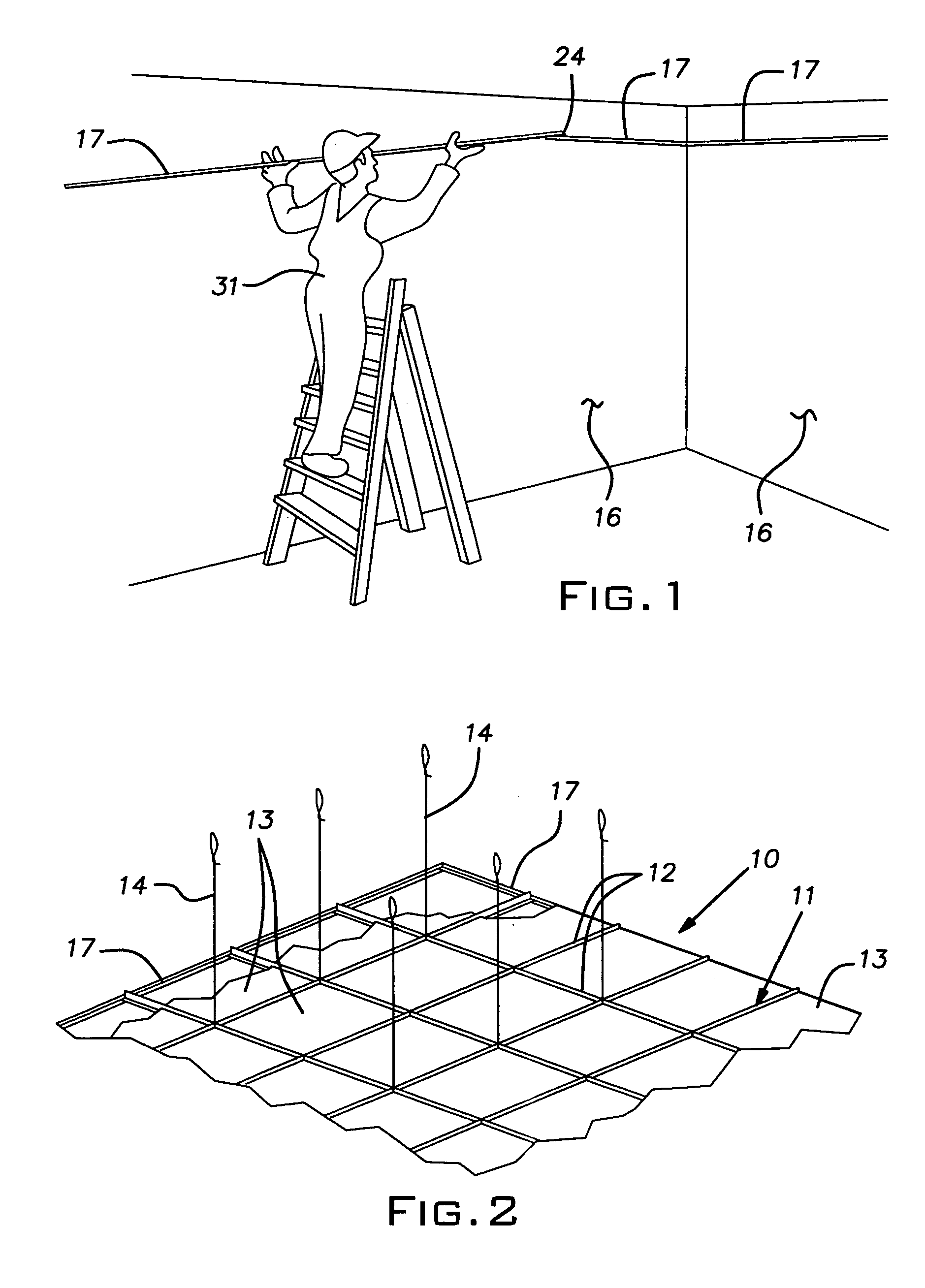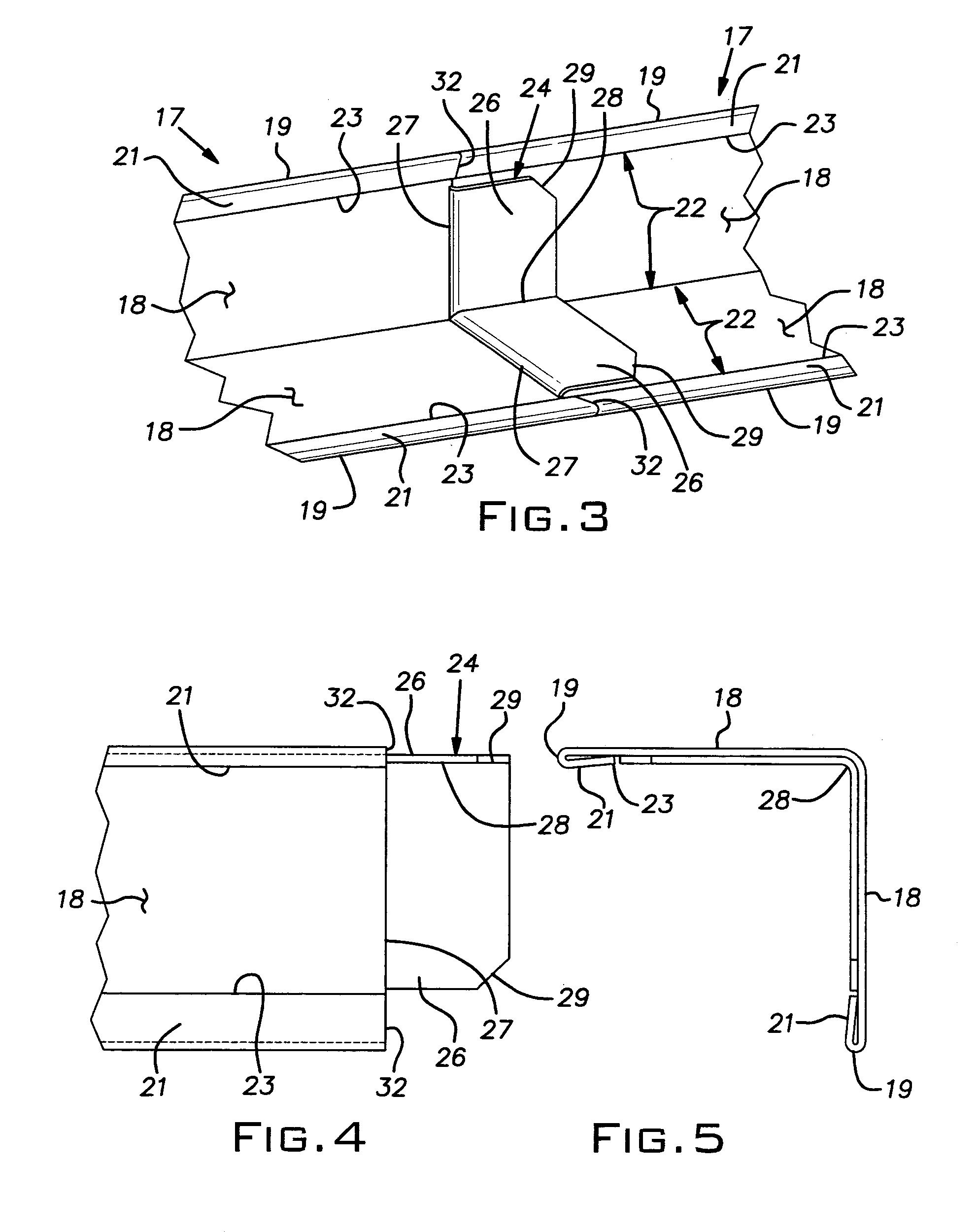Perimeter angle trim
a technology of angle trim and brackets, which is applied in the direction of couplings, rod connections, manufacturing tools, etc., can solve the problems of difficult to hold the bracket level, abutting against a previously installed piece and fastening it to the wall, and not being perfectly rigid, etc., to achieve convenient end-side and lateral registration, less time, and greater positioning accuracy
- Summary
- Abstract
- Description
- Claims
- Application Information
AI Technical Summary
Benefits of technology
Problems solved by technology
Method used
Image
Examples
Embodiment Construction
[0011]Referring now to the drawings and in particular to FIG. 2, a conventional suspended ceiling system 10 includes a rectangular grid 11 of inverted metal tees 12 on which is carried rectangular or square lay-in panels or tiles 13. The tees 12 are typically suspended with wires 14 from an overhead superstructure. The edges of the ceiling system, where the ceiling meets the walls, designated 16, of a building, are finished or trimmed with a wall molding 17.
[0012]The wall molding 17 is in the form of a right angle having perpendicular generally planar legs 18 which, in the illustrated embodiment, are of equal width. As is conventional, the wall molding can be manufactured by roll-forming sheet metal, typically steel, which is pre-painted. The legs 18, at their longitudinal free edges 19, have a roll-formed hem 21 where the sheet metal stock is bent back over itself to stiffen the edge and provide a finished appearance. The hem 21 of folded over material normally has a width substant...
PUM
 Login to View More
Login to View More Abstract
Description
Claims
Application Information
 Login to View More
Login to View More - R&D
- Intellectual Property
- Life Sciences
- Materials
- Tech Scout
- Unparalleled Data Quality
- Higher Quality Content
- 60% Fewer Hallucinations
Browse by: Latest US Patents, China's latest patents, Technical Efficacy Thesaurus, Application Domain, Technology Topic, Popular Technical Reports.
© 2025 PatSnap. All rights reserved.Legal|Privacy policy|Modern Slavery Act Transparency Statement|Sitemap|About US| Contact US: help@patsnap.com



